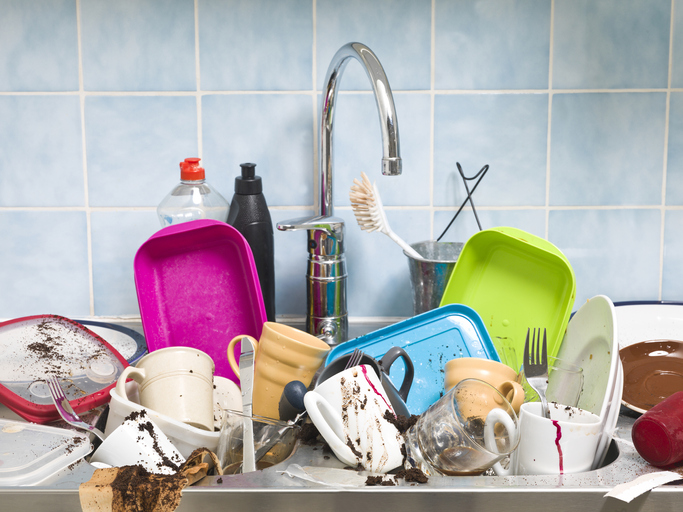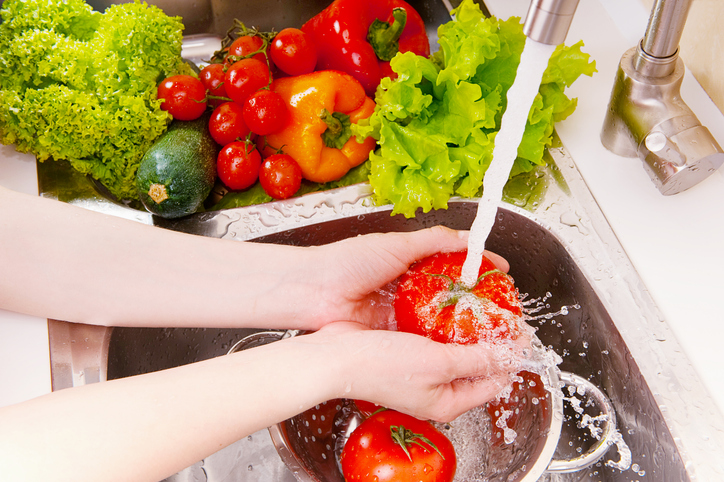- Blog
- Food Hacks & Recipes
- Food Safety and Hygiene at Home
Food Safety and Hygiene at Home

Food nourishes the body. The benefit that your body gets depends on the quality and nutrition value of the food you eat. Fresh and healthy food choices strengthen the body and gives the energy required daily. While meal planning helps achieve the family's nutritional needs, correct food preparation and food storage can ensure that the food is safe to eat.
Without proper food handling and meal preparation, bacteria and germs may breed in the food. These harmful microorganisms may cause food poisoning and other food-borne sicknesses. The advantage of cooking at home is that you can know how food handling and preparation is done correctly.
Here is a quick guide you can follow to ensure food safety and hygiene in your home.
Tips to Ensure Food Safety and Hygiene
1. Wash Your Hands
Your hands touch different objects that may have harmful germs which can be quickly passed to the food you touch. Before handling any food or starting food preparation, wash your hands with water and soap thoroughly for at least twenty seconds.
2. Clean Your Kitchen Countertops and Sink
You should maintain a clean kitchen. Most of your food preparation happens on the kitchen countertops and sink. Unfortunately, these surfaces become breeding grounds for bacteria if not sanitized properly.
To clean your countertop, you may use warm soapy water and a microfiber cloth to wipe the surface. Remember always to clean your countertop to avoid the build-up of dirt, germs, and stains.
The sink and sink drain need extra attention because different food goes into the sink like raw produce and leftover. The moist condition of the drain harbors bacteria such as E. Coli. To keep your kitchen sink clean, you should clean the sink using warm soapy water and a disinfectant product. Don't forget to clean the faucet and sink drain. You may use a clean brush to remove the grimes and water stains in hard to reach areas of the sink, sink drain, and faucet.
3. Clean Your Kitchen Tools
Like your sink, your kitchen tools may be a breeding ground for bacteria. Here are the dirtiest kitchen tools in your home.
- Cutting Boards
Did you know that your chopping boards are dirtier than the toilet? It's gross but true. It's dirty because you use it for chopping raw meat and poultry, which are the source of Campylobacter and Salmonella.
To avoid cross-contamination, use separate boards to cut your meats, poultry, and vegetables. After each use, put your plastic chopping board in the dishwasher on a hot cycle. However, you will clean the board by hand, use hot soapy water and a scrub brush to reach all knife groves. You may clean it naturally by soaking the board in vinegar for five minutes before washing it with soapy water. You may also use baking soda, salt, and water to scrub out the surface stains.
- Sponges
To avoid cross-contamination, you should assign separate sponges for chopping boards and regular kitchen items.
Clean your sponges daily. You may pop the wet sponge into the microwave for a minute or two. Let it cool down before retrieving it from the microwave. Another alternative is to clean the sponge in the dishwasher on a hot cycle.
Before storing your sponge on a sponge rack, ensure to wring out the excess water. Drying out the sponge will help prevent bacteria from breeding on the sponge.
Daily-used sponges should be discarded after two weeks or as soon as it smells bad.
- Sponge holder
Your sponge holder may be grimy and dirty when the sponge is not cleaned and dried correctly.
Regularly check and clean the sponge holder, especially if you see grime or parcels of food on it.
4. Check for Spoiled or Expired Food.
Always check your refrigerator for spoiled leftover food. In general, you should consume the leftovers within four days only. If the food is five days old or more or the food has a foul smell, discard the food immediately.
Check your pantry regularly for food near expiration and plan to cook them as soon as possible. For the food items, throw out expired items immediately to avoid cooking them by mistake.
5. Check the labels.
Some condiments and food products require to be refrigerated after opening. Ensure to check the label of your food items if you are unsure where to store them.
6. Wash your produce

Rinse the fresh vegetable and fruits under running water before meal preparation or storage. You may need to use a brush to clean off firm produce like melons. Ensure to wipe the fresh produce dry with a clean cloth or paper towel.
7. Have separate bags for raw meats and poultry.
It would be best if you put your raw meats, poultry, and seafood in separate bags during your grocery shopping. Avoid putting them in other grocery items to avoid cross-contamination.
8. Cook thawed food immediately.
Once your meat has thawed, cooked it as soon as possible and do not freeze it anymore.
9. Tie your Hair
Your hair might fall into the food you are cooking without you noticing it. For food hygiene and safety, tie your hair.
10. Keep the perishable food in the refrigerator.
Your cooked food at home should only be outside the fridge for less than two hours. Otherwise, bacteria may grow on the food already.
Also, ensure to put leftovers in air-tight containers. You may use bowls but ensure to put a plastic wrap or aluminum foil to cover the bowl.
11. Use the microwave properly.
Before using the microwave, ensure that it is clean. To clean the microwave, you may use baking soda, lemon, or even vinegar. These natural ingredients can help remove the grime and unpleasant smell inside the microwave.
Use a microwave-safe container when you heat food in the microwave and follow heating instructions.
12. Keep chemicals away from the kitchen.
Cleaning agents may contain hazardous materials, so do not store them in the kitchen area. If possible, opt for natural cleaning materials in your home.
Food safety and hygiene are essential to keep our family fit and healthy. By being diligent in food handling, food preparation, and food storage, you can keep your food suitable for consumption.
Do you have other food safety and hygiene tips? We love to hear from you. Please put your comments and suggestions in the comment box below.
Ready to find a great sitter?

No comments